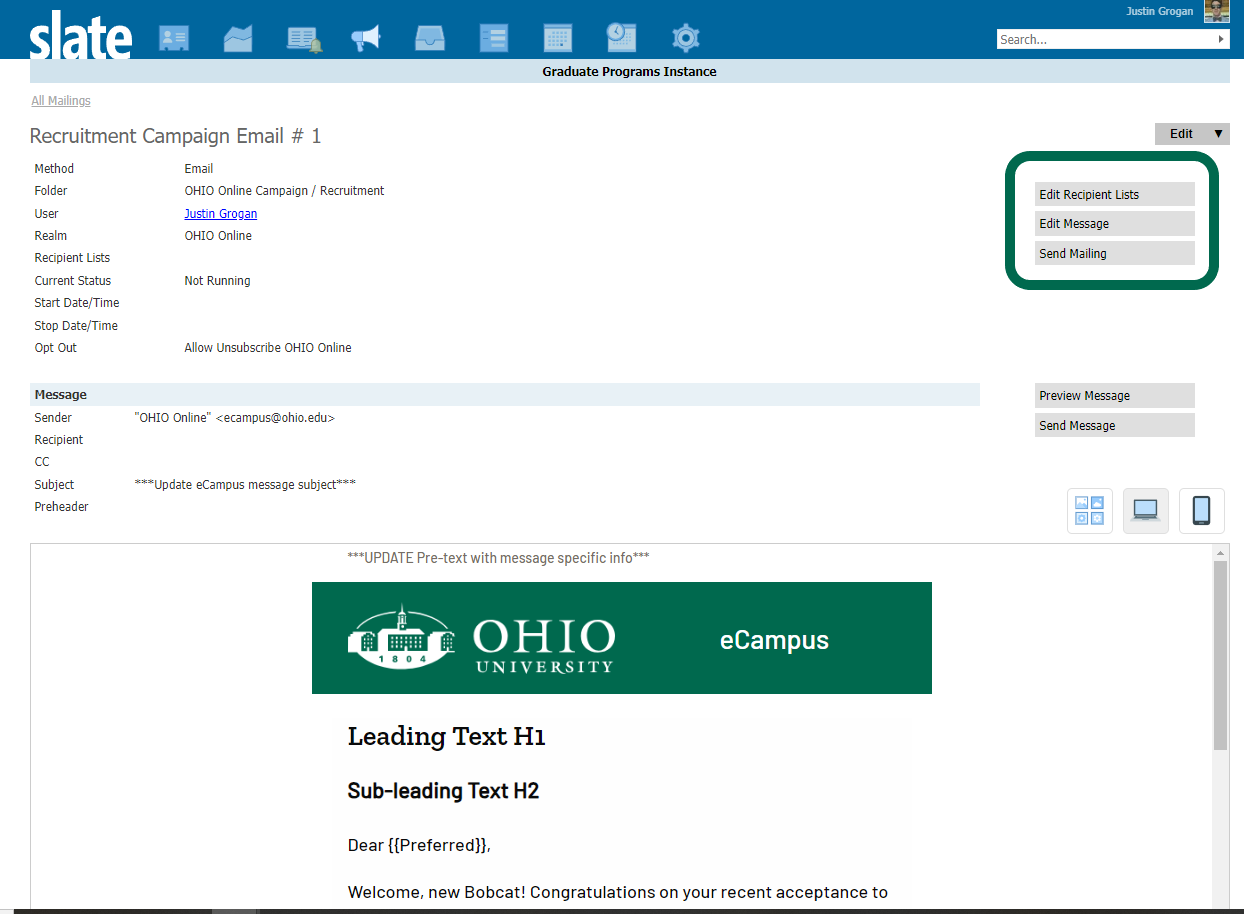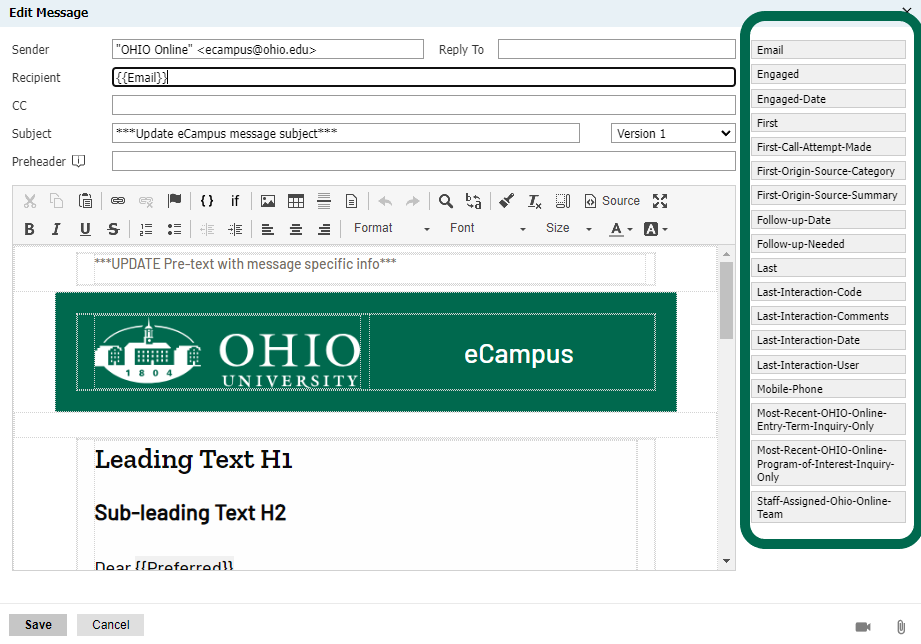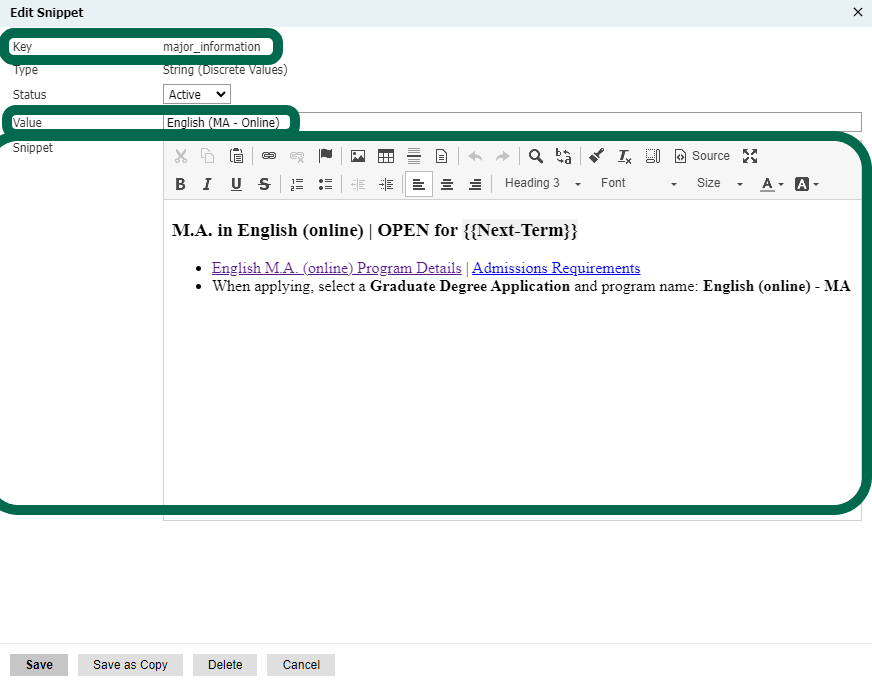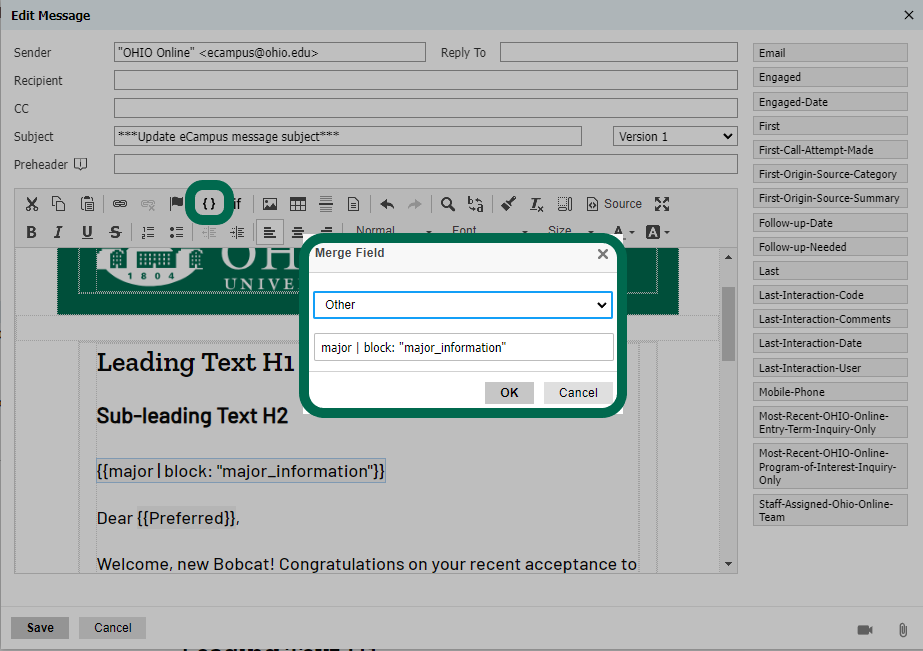Basics
Deliver is a mass communication tool for email, SMS, print, and voice communications. You can view a two minute video in Discover Slate for a quick overview, or a more in depth training video may be found here .
Mailings inside of slate may be scheduled as adhoc, automated to send for a span of time, or even set indefinitely.
Messages may allow for recurring delivery (typically reserved for notifications such as missing checklist items), one message per recipient's email (standard), and do not dedupe (rare, but would allow for multiple deliveries to same recipient if they have multiple rows, such as two applications).
The deliver tool allows communications to be scheduled on specific days of the week and inside of delivery windows:
- Overnight: 2:00am–4:00am
- Morning: 10:00am–12:00pm
- Midday: 12:00pm–2:00pm
- Afternoon: 2:00pm–4:00pm
- Evening: 8:00pm–10:00pm
Special Note: The deliver tool also exists in functionality on forms, events, and interviews (one-on-one events). These messages are not based on delivery windows, but on triggers such as form submission or 48 hours before event. This can be an important distinction when there is a need to generate a communication for an immediate response.
Additional Features overview
- Deliver Library:For ease of access, images may be stored in the deliver library for use across deliver mailings and the Slate system.
- Templates:For consistency, html templates may be designed and accessed whenever creating a new email. At OHIO these templates are typically designed by the University Communications and Marketing team.
- Content Blocks:to dynamically embed content based on conditions of the underlying query (applicant's major or person's state) content blocks may be deployed inside of the query. Content blocks can make use of liquid markup and even other content blocks, so there could be layers of inception such as a content block with information specific to a major, which then references another content block that outputs different info based on the state.
- Liquid markup:a open source template language designed to output content based on a set of conditions or additionally manipulate the output of query exports inside of the mailing. An example would be replacing all the dashes in phone numbers with periods. A full database of the liquidmarkup filters and code options may be found here .
- Populations/Campaigns:Populations may be used to build email campaigns. A population works by identfying a student and counting the number of days they are inside of the population. This allows an email campaign to schedule emails based on the number of days the student has been in the population. So the first email might deliver on day one and the second email on day seven. This will show up on the students timeline. Populations require that all messages be written and ready for delivery prior to starting, thus OHIO rarely uses populations, but instead filters based on the last time a message was recieved to create the same effect of a campaign.
Creating an Email
To create an email, select the megaphone icon in the top navigation and then select New Mailing.
.png)
Fill out all the required fields to create the new mailing.
.png)
- Name:standardizing naming conventions is incredibly important to organization and simplifying querying later on. Organization early in the process can go a long way towards creating a clean system.
- Folder:Similar to naming, standardizing the folder structure is also equally important. To provide perspective, querying on a folder of emails in OHIO Online Campaign is much easier than selecting every single email in the campaign.
- User:Doesn't need changed, just records the user who originally creates the email.
- Realm:Realms may be used if it is necessary to prevent segments of users from viewing/editing one anothers emails. For instance, if the realm is OHIO Online only users with that realm may view the email. However, to use realms, all emails must have a realm .
- Method:This is the type of message that is being sent. Is it an email, sms, or event print request.
- Template:This prepopulates the emails with the html of a specific template.
- Opt Out:This sets the opt out option for the student, and allows them to opt out of messages in a particular group or even system wide, depending on what is selected. Opt out groups may be set in the database under Message Groups .
- UTM Tracking:UTM parameters allow google analytics to see the origin of users when they land on our website. This type of tracking may be enabled on messages, and this feature will add the utm parameters by default to all links inside of the message. This should only be used in coordination with UCM and based on their standardization of acceptable parameters.
- Hide from Timeline:Checking this feature will hide the interaction of this message from the student's timeline.
- View in Browser:A feature that allows for the insertion of a view in browser link. Requires some custom knowledge of html, and also a declaration for how long the view in browser link will remain active.
The three main parts of an email
After creating the email, there are three main parts to completing it's creation.

- Edit Recipient Lists:This is where queries or spreadsheets may be added to the mailing. The base and filters in the queries will control who the email delivers to, and the exports will determine the type of content available to be dynamically displayed. Excel spreadsheets may also be loaded, the columns of the spreadsheet will be the available exports and the rows will determine who receives the email.
- Edit Message:This is where the content of the message is actually edited. A wysiwyg editor is available for easy editing or the html source code may also be manipulated. It is often easier to edit liquid markup and content blocks from inside of the source code.
- Send Mailing:This is where the email is actually scheduled and the frequency set. There are also additional pre-flight checks, which will warn users about any potential issues.
Additional parts
- Preview Message:A record in the slate system may be selected to preview the dynamic display of the email for the prospective recipient. This should be used to ensure the accuracy of particularly complex content blocks or liquid markup.
- Send Message:A test message may be sent to a designated email address.
Editing a Message/Content Blocks
The exports available for dynamic insertion into the email, will be available on the right hand side when editing a message. A query with exports must exist on the mailing.


Content blocks have three very important parts:
- Key:The key is what is used in the deliver mailing in order to reference the content blocks. Think of it as a connector or bridge to get to the content you desire.
- Value:The value is the query export that you are wanting to match against. A content block key will have many values attached to it, and each value will have it's own snippet.
- Snippet:The content that should be displayed or output based on the value that is matched. This is in the form of another wysiwyg editor.
These three parts work in tandem. To provide an example, there is a message that wants to display different information based on the selected major of the student. To do this, the major export must be in the underlying query on the mailing and then a content block needs created. The key to the content block would be major_information. A value example would be English, and then the snippet would be the content specific to that major.

Inserting a Content Block
To insert the content block into the email select the merge field icon.

The merge field is broken into three parts and Other must be seleted.
- Part 1:The name of the export that will be used to match against the content block value followed by the pipe symbol |.
- Part 2:block followed by a colon :. This tells the code we are importing a content block.
- Part 3:The key to the content block in parenthesis: "major_information".
